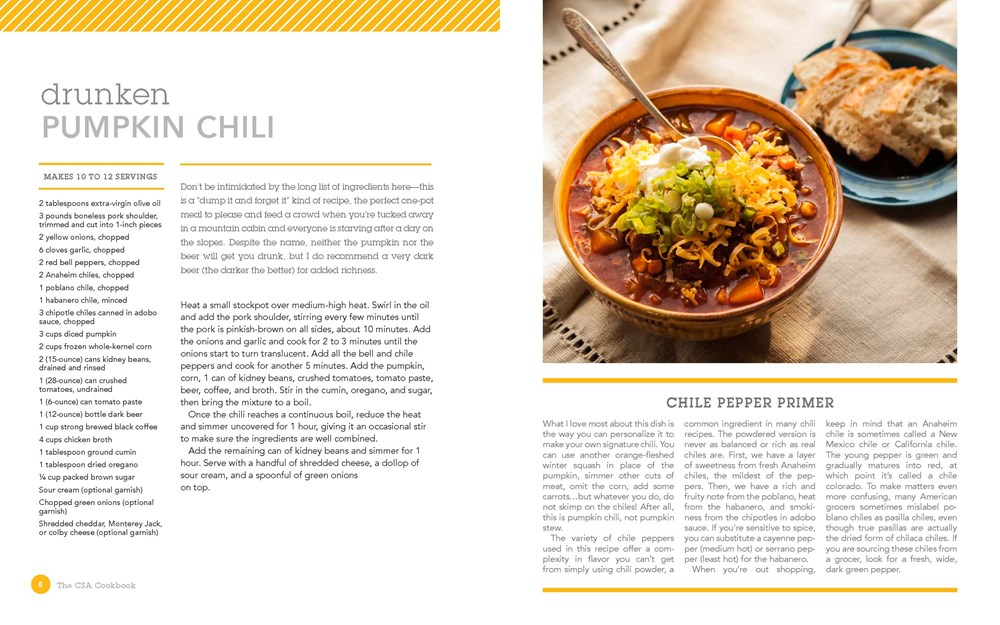Garden Book Review: The CSA Cookbook

Book Blurb:
Make the most of your CSA membership—or your garden harvest—with simple yet bold, inventive yet nourishing meals from acclaimed blogger Linda Ly.
Community Supported Agriculture (CSA) programs have connected farms to consumers and made people more in tune with where their food comes from, but still leave many stumped beyond the conventional uses for their produce. How many times has a CSA share arrived with things you’ve never seen before or not known what to do with?
The CSA Cookbook will help you cook your way through a CSA box (or farmers’ market or backyard bounty) with 105 seasonal recipes that utilize every edible part of the plant, from leaves and flowers to stems and seeds. Think of it as a nose-to-tail approach—for vegetables!
With innovative ideas for preparing the lesser-known but no-less-delicious parts of plants, tips for using the odds and ends of vegetables, and easy preservation techniques, Linda Ly helps you get from farm to table without a fuss. Chapters include tomatoes and peppers, leafy greens, peas and beans, bulbs and stems, roots and tubers, melons and gourds, and flowers and herbs. You’ll find globally-inspired, vegetable-focused recipes that turn a single plant into several meals—take squash, for instance. This year-round vegetable brings a variety of tastes and textures to the table: Sicilian Squash Shoot Soup, Squash Blossom and Roasted Poblano Tacos, Autumn Acorn Squash Stuffed with Kale, Cranberries, and Walnuts, and Toasted Pumpkin Seeds. If you grow your own food at home, you might be surprised to learn you can eat the leaves from your pepper plants, or pickle the seed pods from your radishes.
The CSA Cookbook aims to inspire curiosity in the garden and creativity in the kitchen. You’ll look at vegetables in a whole new way and think twice before you discard your kitchen “scraps”!
Growing unique and new veggies is sometimes the same as opening up the latest box from your local CSA (community sponsored agriculture) – you have all this new fresh stuff and can’t figure out what to do with it. She writes:
“I’m sure there has been many a time when you’ve peered inside your weekly CSA box and though, ‘What the hell?’ And maybe you’ve given away your unidentifiable produce or fed it to your rabbits, or simply chucked them in your compost pile. Those days are no more.”
From a person with an affinity to plant random and different stuff in dirt, I can see where Linda Ly is coming from here. And while the author doesn’t go into too crazy of vegetable territory here, she does make use of the unique tasting and most often disposable parts of foods we take in every day into our kitchens: tomato leaves and stems; pepper leaves; fennel fronds; radish seed pods and leaves; sweet potato leaves; herb blossoms; nasturtium pods. And more.
She gives her opinion and her take on organics, the use of salt, and whether or not to peel. She also gives great advice on how to properly store veggies to keep them in their prime. Her everything-but-the-kitchen-sink stock is awesome and something I’ve done since the birth of my first baby on the advice from a fellow cook (thank you Mercedes! I still do this! 🙂 ). For those who are new to this kind of veggie stock, her chart on all the possibilities to add to keep the stock nice and balanced is helpful.
Ly sections her cookbook by what the topics are: The Basics; Tomatoes and Peppers; Leafy Greens; Peas and Beans; Bulbs and Stems; Roots and Tubers; Melons and Gourds; Flowers and Herbs. Her resources section includes online stores to source out ingredients, some of which have brick and mortar locations to shop at.
All in all, a pretty great book. Not only for the recipes, but I actually learned something here – that often the stuff that you don’t typically eat or prepare from a fresh vegetable can oftentimes be just as good, or in some cases better, than the stuff you keep.
Book Info (Amazon):
- The CSA Cookbook: No-Waste Recipes for Cooking Your Way Through a Community Supported Agriculture Box, Farmers’ Market, or Backyard Bounty
- Voyageur Press; 2015
- ISBN13: 9780760347294
- Hardcover and ebook versions available.
Disclosure: This book was provided by the publisher to me and any opinions are my own. This post contains affiliate links for the book, and any purchase helps to keep this garden blog running. 🙂

You must be logged in to post a comment.